Sustainable management of the main Aquatic Macrophytes
(Edited)
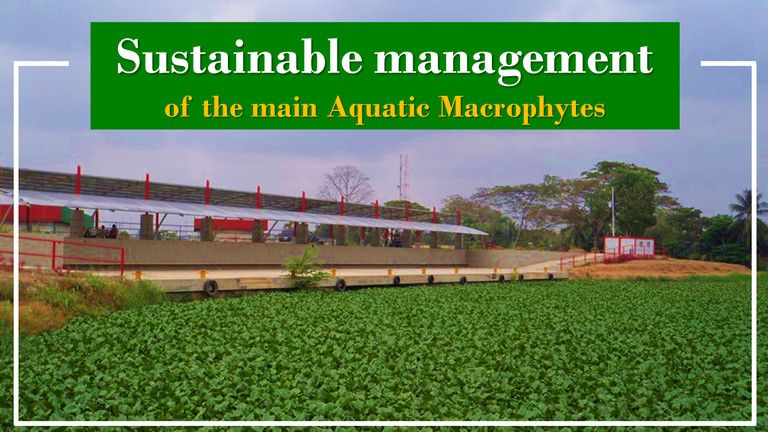
In the last two decades, developing sustainable studies has become a frequent practice, which is why I wanted to share with friends and members of @ecoTrain, an agroecological reference community on the #Hive platform, a brief descriptive study on Aquatic Macrophytes, mainly on the sustainable use based on the high vegetative reproduction and capacity of absorption of mineral elements that these plant materials exhibit.
Introduction
Aquatic macrophytes or hydrophytes are known as macroscopic plant specimens that inhabit aquatic environments, either emergent, submerged or floating, develop their vegetative and reproductive life cycle in water, or spend part of their lives in the aquatic environment, the term most commonly used by biologists to refer to this group of species is aquatic vascular plants.
Another important aspect to consider of these plant species is their high capacity to absorb mineral elements when all their vegetative parts are submerged or supported by water.
Consequently, the objective of this publication is to socialize the main life forms, organographic characteristics, invasive profile, and the potential of aquatic macrophytes in the elaboration of agricultural bio-products.
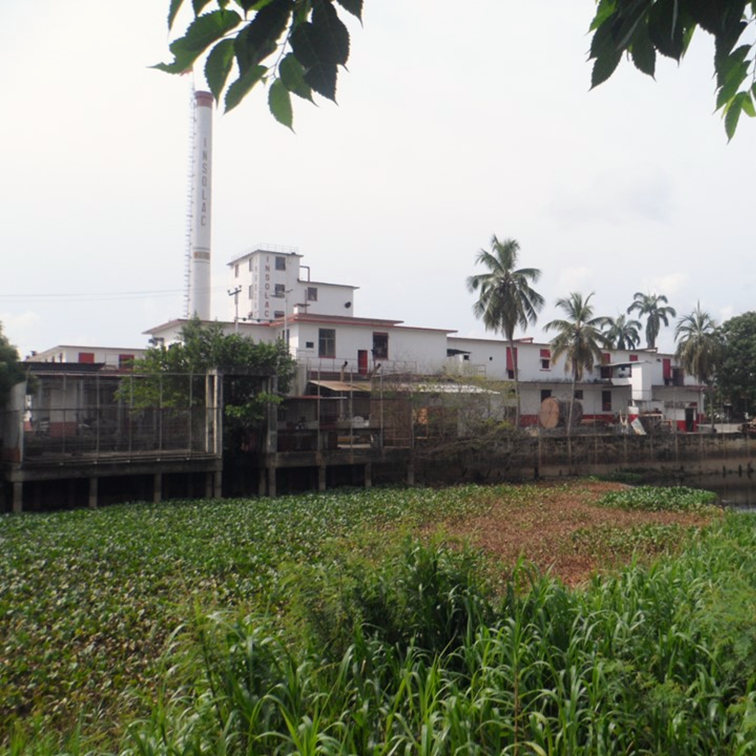
Fig. 2 Aquatic macrophytes tend to proliferate excessively in natural or artificial water bodies. Author: @lupafilotaxia.
Aquatic macrophytes life forms
The main life forms of the aquatic macrophytes are as follows:
A.- Emergent rooted plants: those plants anchored to the substrate and part of the stem, leaves and the reproductive structure protrudes from the water. Examples: Limnocharis flava L., Sagittaria lancifolia L., Cypers papyrus L.
B.- Submerged rooted plants: are those that are attached to the substrate with the vegetative structures inside the water, while the reproductive organs may be submerged, emerging or floating. Example: Hydrilla verticillata, Egeria densa, Ranunculus flagelliformis.
C.- Free-floaters: have both their reproductive and vegetative structures on the water surface. Example; Eichhornia crassipes (Mart.) Solms-Laubanch., Pistias stratiotes L., Lemna minor L., Lemna gibba, Azolla spp., Salvinia auriculata, Salvinia molesta.
Organographic characteristics of aquatic macrophytes
| Root | The root system in most aquatic macrophytes is adventitious type, the submerged species do not present appreciable roots, it is estimated that they absorb water through the rest of their organographic structures, while the floating ones such as Pistias stratiotes L. exhibit poorly developed roots. |
| Stem | They are herbaceous in consistency, do not have collenchyma and sclerenchyma tissues, and generally have rhizome-like stems. Floating aquatic macrophytes histologically present arenchyma along the stem, which allows them to accumulate air and float in the water. |
| Leaf | Aquatic macrophytes tend to have simple leaves of diverse morphology, with very thin and permeable epidermis, with few stomata in floating species and absent in the case of submerged species. |
| Flower | There are numerous aquatic macrophytes, which lack reproductive organs, in these cases reproduction is vegetative, in the species with visible flowers, pollination occurs with the help of insects, wind or water. |
| Fruit | They are of occasional occurrence, so these species are generally propagated by vegetative multiplication, not demanding sexual reproduction for long periods of time, a fact accentuated in fluctuating environmental conditions. |
Invasive profile of some aquatic macrophytes
As is well known, the main biological characteristic of invasive plant species is their high vegetative and sexual reproduction, which turns them into weeds, as they spread further away from their initial place of establishment, thus becoming locally abundant, colonizing the new territory and persisting there, This is the case of aquatic macrophytes, whose capacity for excessive proliferation in eutrophic aquatic environments, the absence of natural enemies and the ability to occupy a "vacant niche" position them as invasive aquatic plants.
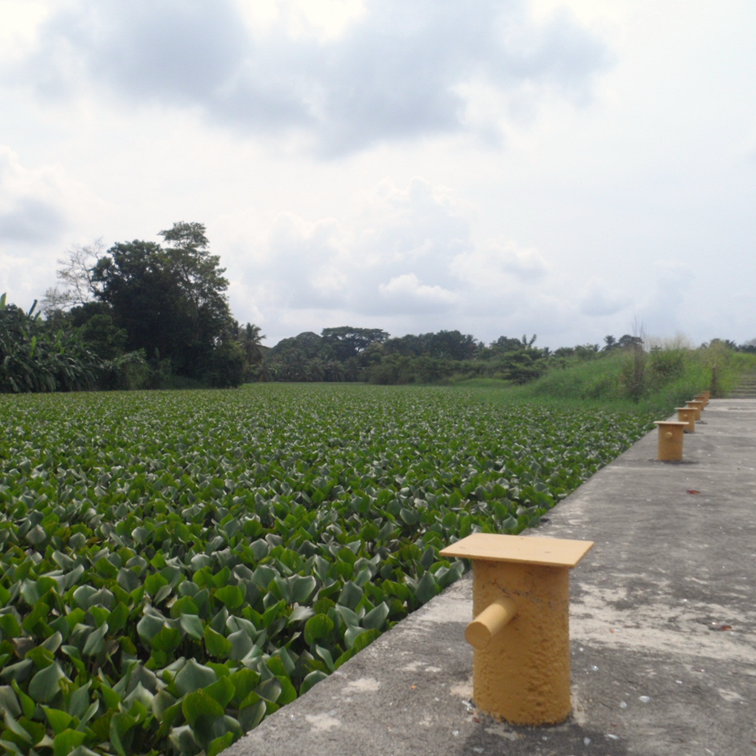
Fig. 3 Excessive proliferation of aquatic macrophytes generates problems of obstruction of navigation and fishing channels.. Author: @lupafilotaxia.
Another biological characteristic of invasive aquatic macrophytes, which allows them to colonize, is the ability of these species to adapt to pH between 4 - 10 and grow in water bodies with high mineral element content, conditions typical of aquatic environments modified by anthropogenic activities.
Precisely in these modified water bodies, ideal scenarios are generated, so that invasive plants, such as Bora (Eichhornia crassipes), water hyacinth (Limnocharis flava), water cabbage (Pistias stratiotes), lemna (Lemna minor), duckweed (Lemna gibba), elodea (Hydrilla verticillata), mosquito fern (Azolla caroliniana), water fern (Azolla filiculoides), mouse ear (Salvinia auriculata), water accordion (Salvinia molesta) is causing serious socioeconomic, ecological and health problems around the world.
Aquatic macrophytes as weeds
Global and national problem
Aquatic macrophytes represent an important socioeconomic and ecological burden for many subtropical and tropical regions of the world. An example of this is the onslaught of large invasions of aquatic weeds on crops that require permanent irrigation; in the case of rice, considerable production losses have been reported worldwide, due to the attack of species such as E. crassipes, and L. Flava.
In the particular case of E. crassipes L., it is considered the aquatic arvense that causes most problems in various ecological communities, due to its rapid spread, difficult eradication, invasion of rivers, drainage canals, reservoirs, dams, dykes, natural and artificial lagoons. This species has been catalogued as harmful in Asia and Africa, due to the serious ecological and social problems generated, among those reported: eutrophication, sedimentation, proliferation of insects harmful to health due to the development of vector organisms for diseases such as dengue, encephalitis, malaria and yellow fever.
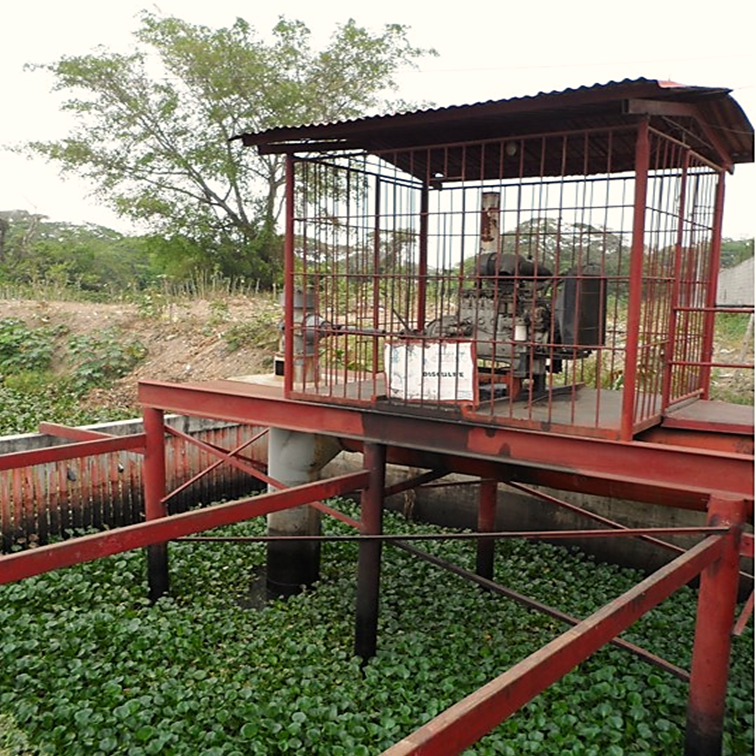
Fig. 4 The excessive proliferation of aquatic macrophytes generates problems of obstruction of drainage channels. Author: @lupafilotaxia.
In Venezuela, the adverse effects caused by aquatic macrophytes are increasingly accentuated in the state of Guárico, a region with excessive proliferation of E. crassipes, which affects the production of rice (Oryza sativa L) and the consequences increase with the progressive change that occurs within the ecosystems, as a result of new cultivation techniques, permanent irrigation and the increase of nutrients due to the effects of fertilizers.
The southern area of Lake Maracaibo is another of the eco-regions in Venezuela, where invasive aquatic plants L. flava and P. stratiotes L., hinder rivers, and drainage channels located in the most popular sectors of the Catatumbo, Colon and Francisco Javier Pulgar Municipalities of Zulia State, causing in addition; 1) reduction of fish by deoxygenation of the water, 2) physical interference with fishing and transportation and 3) proliferation of mosquitoes and poisonous snakes.
CONTRIBUTIONS OF THIS PUBLICATION
- The problems generated by invasive aquatic macrophytes have captured the interest of researchers, by presenting effective alternatives in the sustainable and economic management for the control of these species, with the objective of mitigating the high costs of conservation caused in the hydro-agricultural distribution networks such as water bodies and at the same time to allocate the high volumes of raw material in the processes of elaboration of agricultural and livestock bio-products, under a sustainable approach.
BIBLIOGRAPHICAL REFERENCES CONSULTED AND CITED:
[1] Shilpa S., Tapati Dasa., and Prasanna K. Co-composting invasive aquatic macrophytes and pond sediment holds the potential for environmental amelioration: Selecting the right shade of grey. Acta Ecologica Sinica. 2020. Article: Online access
[2] Thiebaut G., and Dutartre A. Management of invasive aquatic plants in France. Responses of waterprimroses to abiotic factors. 2012. Article: Online access
[3] Mack R., Simberloff D., Lonsdale M., Evans M., Clout F., and Bazzaz, A. Biotic Invasions: Causes, Epidemiology, Global Consequences, and Control. Ecological Applications. 2000; 10: 689 - 710. Article: Online access
[4] Paris C., Hadad H., Maine M., and Suñe N.Eficiencia de dos macrófitas flotantes libres en la absorción de metales pesados. Limnetica. 2005; 24; 3: 237 - 244. Article: Online access
[5] Rodríguez J., Marcano A., and Salazar, J.Efecto de la suplementación con bloques multinutricionales a base de Eichhornia crassipes sobre la producción de leche de vacas de la raza Cebú x Criollo. Pastos. 2005; 35; 2: 179 - 189. Article: Online access

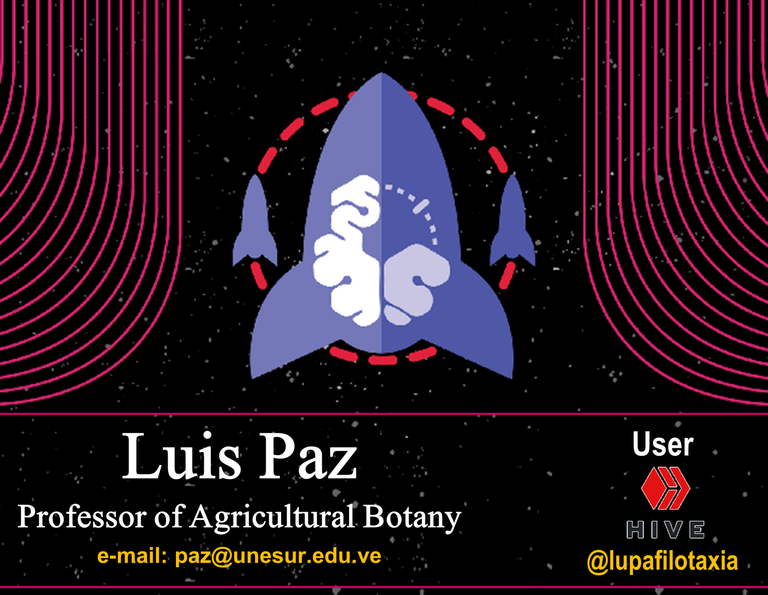
0
0
0.000
https://twitter.com/lupafilotaxia/status/1353089913227513864
#Posh Twitter:
https://twitter.com/lupafilotaxia/status/1353089913227513864
Are they really such a problem? Aren’t some of those edible? I imagine they also do a good job purifying the water... Anyway, just speculating. Good post, will bookmark it.
Correct, aquatic macrophytes are extraordinary, some are edible, have the capacity to purify water bodies, accumulate nutrients. However, in activities of fluvial transport, fishing, drainage, they usually cause serious problems due to their rapid growth, therefore, it is recommended to use them in the elaboration of agricultural bio-products among other uses. Thank you for visiting our blog.